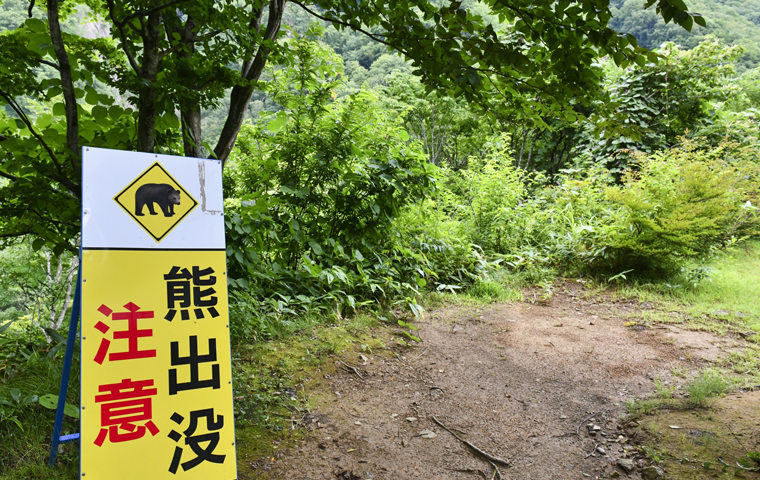The Worst Bear Encounters in History: Japan at a Crossroads of “Coexistence”
Related Articles
Statistics Indicate a “New Stage”: The Bear Threat Enveloping Japan in 2025

On November 4, 2025, Japan’s Ministry of the Environment announced that the number of bear sightings nationwide in the first half of the fiscal year (April–September) had reached 20,792 cases (preliminary figure). This far exceeds the 15,832 cases recorded in the same period the previous year, marking the worst pace since statistics began in fiscal 2009. At the same time, the number of bears captured reached 6,063, the highest since 2006. These figures indicate that the relationship between humans and bears in Japan has entered an unprecedentedly tense phase.
The crisis extends beyond a mere increase in sightings. What is even more serious is the surge in human casualties. According to the Ministry, as of November 4, 2025, 12 people had died due to bear attacks—twice as many as the previous record of six deaths in all of fiscal 2023. This represents an extraordinary situation, even considering reports of “media exaggeration.” Statistically, fatal encounters have already surpassed all previous records, confirming that the 2025 crisis is qualitatively different.
Experts point out that “the phase has completely changed.” The defining feature of this year’s crisis is the shift in location—its “urbanization.” Until recently, bear encounters were primarily an issue in mountain villages or trailheads. However, this year has seen serious incidents in urban and residential areas.
In October, Sapporo City’s Nishi Ward, a densely populated area, conducted Hokkaido’s first-ever “emergency shooting” operation, killing two bears. Toyama City also authorized and carried out an emergency shooting of a bear (an 80-cm female) in a residential district. Meanwhile, in Katsuyama City, Fukui Prefecture, a mother bear and cub were killed near a kindergarten, marking the first such operation in the prefecture. These cases symbolize how the threat has expanded from “high-risk mountain users” to “ordinary city residents and children.” Japan’s long-standing assumption of a clear boundary between mountain and human settlement has effectively collapsed.
The Collapse of Forest and Village: Why Bears Are Moving Into Human Areas
Why do bears risk entering human territories? The answer lies in structural issues within Japan’s landscapes—factors that simultaneously push bears out of the mountains and pull them toward human settlements.
The immediate trigger in 2025 is a severe food shortage in mountain forests. Beech and oak acorns, the bears’ main food source, have suffered a widespread crop failure. The Tohoku Forest Management Bureau reported that Iwate Prefecture was experiencing a “major poor harvest” for the second time in three years. Bears unable to accumulate enough fat for hibernation are venturing into human areas in desperate search of food.
However, the real problem is that human settlements now provide an unintended “reception area”. Historically, Japan’s satoyama—managed forests and farmlands between mountains and villages—served as a buffer zone. Due to rapid depopulation and aging in rural areas, this satoyama landscape has collapsed. Abandoned farmland and neglected fruit trees such as persimmons and chestnuts have proliferated. To foreign readers, one might say: the mountain has become a barren desert, while the once-feared foothill villages have turned into “unmanned convenience stores” stocked with high-calorie food.
Two long-term, contradictory trends underlie this.
First, the change in forest quality. Postwar reforestation replaced broad-leaved forests with cedar and cypress plantations, making many mountain areas “inedible forests” for bears.
Second, ironically, the increase in bear populations. According to Naoki Onishi of the Forestry and Forest Products Research Institute, the rise in bear incidents largely stems from population growth and range expansion. Protection policies since the 1990s and a decline in hunters have allowed bear populations to recover. Thus, 2025’s crisis is a compound disaster—a convergence of (A) successful conservation, (B) degraded forest quality, (C) rural decline, and (D) short-term acorn failure. Bears have increased, but their natural habitat has not recovered, leading to their spillover into human spaces.
Escalating “Culling”: Emergency Shooting and Japan’s New Wildlife Policy

With the threat entering a “new phase,” both national and local governments have shifted from passive “deterrence” and “damage control” to active, rapid culling. This policy pivot is occurring on two levels—tactical and strategic.
Tactically, the new Emergency Shooting System, introduced by law amendment, allows swift response. As noted, the cases in Sapporo, Toyama, and Katsuyama were all conducted under this system. Unlike traditional procedures that required time-consuming approval, mayors can now authorize immediate shooting when bears pose imminent danger in populated areas. The frequent use of this system shows that authorities have effectively abandoned “driving bears back into the mountains”, prioritizing citizen safety through immediate extermination.
Strategically, the national government has designated bears as a “managed wildlife species”, similar to deer and wild boar. Under this framework, the central government subsidizes systematic population control rather than isolated reactive measures. This marks a historic policy shift—from protecting bears to managing their numbers.
However, this stronger culling policy faces serious challenges. Local hunting associations are aging, and urban shooting carries heavy psychological and legal risks. Consequently, political parties such as the Constitutional Democratic Party of Japan and various experts have proposed restructuring the entire system—clarifying hunters’ legal immunity and considering a “government hunter” program to professionalize dangerous wildlife control. This represents a major shift in Japan’s social contract: transferring the burden of killing from private volunteers to the public sector.
At a Crossroads of “Coexistence”: The Future of Japan’s Forests and Society
Faced with record casualties and an accelerating culling policy, Japan stands at a crossroads, questioning how to coexist with bears. Two opposing approaches now define the national debate.
The first is “adaptive management based on scientific evidence,” supported by the government and many experts. This approach calls for accurate monitoring of population and distribution, followed by planned reduction to socially acceptable levels. The new “managed wildlife” designation and emergency shooting framework align with this philosophy—prioritizing safety amid record fatalities.
The second is championed by conservation groups such as the Japan Bear & Forest Society (Kumamori), which strongly oppose the new policy as “unsuitable from the first year.” They argue that (1) bears have low reproductive rates, (2) the root cause is food scarcity, not population, and (3) mechanical culling risks local extinction. Their solution is “zoning for coexistence”—restoring rich mountain forests for bears and using electric fencing to prevent entry into human settlements.
The divide is clear: while the management side seeks to protect human boundaries, the coexistence side seeks to restore bear habitats. Yet, as discussed earlier, the satoyama buffer that once separated the two worlds has already collapsed due to depopulation.
Japan’s 2025 bear crisis serves as a litmus test for how the nation confronts its postwar legacies—successful wildlife recovery versus failed land and forest management. Climate change–driven acorn cycles, irreversible rural decline, and simplified ecosystems all converge in this moment. Japan must now choose: will it forcibly rebuild balance through “culling,” or pursue the more difficult path of “habitat restoration and coexistence”? That choice will define Japan’s environmental identity for the world.



